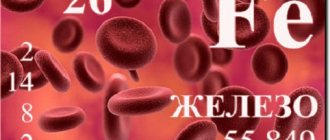Biological role
The primary function of magnesium is to form bone tissue and speed up metabolism.
Other beneficial properties of the macronutrient:
- increases the immune activity of cells;
- maintains the stability of genetic material (DNA and RNA), preventing the occurrence of mutations;
- slows down the release of histamine from mast cells;
- coordinates heart rhythm (reduces myocardial contractility, reduces heart rate and high blood pressure);
- increases bone mineral density, preventing the occurrence of fractures (together with calcium and phosphorus);
- activates enzyme systems, including peptidases, phosphatases, carboxylases, phosphorylases, cholinesterases, pyruvate kinases, keto acid decarboxylases;
- participates in the synthesis of nucleic acids, fats, proteins, B vitamins, collagen;
- maintains homeostasis of potassium, calcium, sodium;
- accelerates the removal of toxic substances from the body, including cholesterol deposits;
- potentiates platelet disaggregation, resulting in improved blood “fluidity”;
- normalizes the processes of inhibition and excitation in the brain;
- regulates the permeability of mitochondrial and cellular membranes;
- participates in the conduction of nerve signals;
- controls blood sugar levels;
- prevents calcium deposition in the kidneys, gall bladder, ureters, bones (together with vitamin B6);
- increases the osmotic pressure of intestinal contents, accelerating the passage of feces;
- participates in the processes of neuromuscular excitation, improving muscle contractility (together with calcium);
- accelerates the transformation of creatine phosphate into adenosine triphosphate, potentiating energy metabolism reactions;
- increases the body's resistance to stress.
Along with this, products with a high concentration of magnesium help in the fight against insomnia, migraines, anxiety, and nervous disorders.
Bioavailability
The mineral supplied with food is absorbed in the small intestine and excreted by the kidneys. If vitamin B6 and potassium help it to be absorbed, then phytin, fats and calcium (Ca) interfere. Therefore, it is important to limit the intake of lipids to physiological norms and not take calcium supplements without medical indications. As for phytic acid, it is the many-hour soaking recommended by our expert at the beginning of the article that helps reduce its amount in plant foods - nuts, cereals, seeds.
Please note that the element is eliminated from the body faster and/or is less absorbed when:
- heavy sweating;
- taking medications for constipation, diuretics, antibiotics, and anticancer drugs;
- alcohol abuse;
- nicotine and drug addiction;
- increased physical and emotional stress.
Fitness trainer, nutritionist Nika Tyutyunnikova: “If you oversaturate the body with calcium against the background of a modest intake of magnesium, the former will contaminate the tissues and be deposited in the joints. It can also lead to the formation of kidney stones. Therefore, a calcium diet is impossible without including foods that contain a lot of magnesium.”
Daily requirement
The daily requirement of magnesium directly depends on the gender, age and physiological state of a person.
The daily requirement is:
- for newborns up to 5 months – 30 – 50 milligrams;
- for infants from 6 months to 1 year – 70 milligrams;
- for children under 3 years old – 100 milligrams;
- for children from 4 to 7 years old – 150 – 170 milligrams;
- for schoolchildren from 9 to 13 years old – 250 milligrams;
- for young people under 30 years old – 310 – 350 milligrams;
- for adults – 400 milligrams;
- during pregnancy and lactation – 450 – 700 milligrams.
The need for magnesium increases with:
- stress;
- protein diet;
- pregnancy, breastfeeding;
- formation of new tissues (in children, bodybuilders);
- postoperative period;
- alcohol abuse;
- taking diuretics, laxatives, estrogens, hormonal contraceptives.
In addition, it is advisable for women during menopause to consume magnesium food (450 – 500 milligrams) in order to mitigate menopausal symptoms and reduce nervous excitability.
Signs of Zinc Deficiency
The following signs indicate that the body is not receiving enough zinc in the required quantities:
- Weak immunity. Frequent colds and various infections are not uncommon for you.
- Zinc blocks the release of histamines into the blood. If it is not enough, then the person has symptoms of an allergic reaction, such as itching, sneezing and runny nose.
- Sleep disorders . Zinc plays an important role in the production and regulation of melatonin, the sleep hormone. Without enough melatonin and zinc in the body, you can forget about healthy sleep.
- Hair loss. When thyroid hormone levels are low, the body is unable to absorb zinc. This causes hair loss.
- Attention disorders. There is a relationship between low urinary zinc levels and hyperactivity.
- Poor skin condition. 6% of the total zinc in the body is found in the skin. Scientists suggest that the cause of acne is a deficiency of zinc in the body.
- Stunted growth . Zinc deficiency is a common cause of short stature in children because bones do not receive enough of this mineral to grow.
- Infertility or problems conceiving . Zinc improves the health of the reproductive system.
- Alzheimer's disease. Zinc supplements may help prevent cognitive impairment, especially in older people.
Be sure to consult your doctor before taking zinc supplements.
If you are deficient in zinc, be sure to include these zinc-containing foods in your diet, which are located below in the table. Be extremely careful, as excess zinc in the body can have the opposite effect.
Deficiency and excess
A balanced diet, in 80% of cases, covers the body's daily need for magnesium. However, due to industrial processing of raw materials (refining, cleaning, grinding, pasteurization), the concentration of the mineral in food is halved. In addition, many people do not get enough of it because they lead an unhealthy lifestyle or have chronic pathologies of the digestive tract.
Considering that magnesium is a cofactor of enzymes and a regulator of biochemical reactions in the body, its deficiency reduces immunity and causes functional disorders.
Signs of magnesium deficiency:
- increase in infectious diseases;
- constant fatigue;
- prolonged seasonal depression;
- decreased performance;
- long recovery period;
- anxiety, phobias, worries;
- insomnia, morning fatigue;
- irritability;
- glare before the eyes;
- muscle spasms, twitching, convulsions;
- sensitivity to noise and weather changes;
- dizziness;
- impaired coordination of movements;
- changes in blood pressure;
- heart rhythm disturbances;
- cramping abdominal pain accompanied by diarrhea;
- hair loss, brittle nail plates.
In addition, a characteristic symptom of hypomagnesemia, according to scientists N.M. Nazarova, V.N. Prilepskoy, E.A. Mezhevitinova, is premenstrual syndrome caused by a decrease in the number of red blood cells in the blood.
Exogenous factors that provoke a lack of mineral in the body:
- adherence to “strict” mono-diets, fasting;
- insufficient magnesium content in the daily menu;
- excessive consumption of calcium, protein and lipid foods;
- chronic alcoholism, smoking;
- hormonal contraception;
- taking magnesium-depleted mixtures for parenteral or enteral nutrition;
- insufficiency of vitamins B1, , B6 in the diet.
However, hypomagnesemia almost always occurs against the background of pathologies of internal organs.
Endogenous causes of magnesium deficiency:
- impaired nutrient absorption due to diarrhea or small intestinal fistula;
- kidney diseases;
- diabetes mellitus with persistently high blood sugar levels;
- myocardial infarction;
- hyperfunction of the thyroid and parathyroid glands:
- circulatory failure, especially congestive;
- cirrhosis of the liver;
- increased synthesis of aldosterone (adrenal hormone).
In addition, long-term use of diuretics, glucocorticosteroids, cytotoxic drugs and estrogens is fraught with the development of hypomagnesemia.
Remember, macronutrient deficiency is difficult to diagnose using a blood test, since 99% of the nutrient is concentrated inside cellular structures, and only 1%? In blood plasma. In view of this, anamnesis is established based on symptoms, having previously assessed the clinical condition of the patient.
An overdose of magnesium, in 90% of cases, develops against the background of renal failure, increased protein catabolism, untreated diabetic acidosis, uncontrolled use of drugs and food products containing microelements.
Symptoms of hypermagnesemia:
- speech and coordination disorders;
- drowsiness;
- slow heart rate;
- lethargy;
- decreased heart rate (bradycardia);
- dry mucous membranes;
- abdominal pain;
- nausea, vomiting, diarrhea.
Prolonged hypermagnesemia is fraught with a persistent decrease in blood pressure, respiratory failure, and in rare cases, cardiac arrest.
Symptoms of hypo- and hypermagnesemia
If serum magnesium concentrations drop to 0.5-0.7 mmol/l, moderate hypomagnesemia is diagnosed. At values below 0.5 mmol/l, they speak of a severe, life-threatening deficiency of the element in the body.
In the early stages, this condition manifests itself as poor appetite, nausea, vomiting, and loss of strength. In advanced cases, the picture is as follows:
- numbness of the limbs;
- convulsions;
- disturbances of consciousness;
- memory gaps;
- personality disorders;
- heart rhythm disturbances.
Severe hypomagnesemia can lead to potassium and calcium deficiency. It accompanies a number of pathological conditions: from alcoholism and autism to stroke and heart attack. Particularly characteristic of neurological disorders. A lack of the mineral increases the risk of cancer, diabetes, and weakens blood vessels and immunity.
People whose professions are characterized by high levels of stress are at risk for developing hypomagnesemia. These are law enforcement officers, doctors, teachers, journalists, and businessmen. A magnesium diet is also needed for those who physically work a lot, are involved in noisy industries, and are exposed to light overload (for example, welders). Similar recommendations for those who like to take a steam bath. Lack of sleep and express diets also “wash out” the mineral.
Hypermagnesemia is said to exist if the concentration of the substance in the blood serum exceeds 1.05 mmol/l. It is impossible to get an overdose due to the abundance of magnesium foods on the menu. This is a rare condition found in patients with impaired renal function. It is characterized by a decrease in reflexes and pressure levels. Respiratory depression and cardiac arrest are possible. To reduce the content of the element in the body, calcium supplements, diuretics are prescribed, and blood purification is carried out using hemodialysis.
Fitness trainer, nutritionist Nika Tyutyunnikova: “During training, magnesium, potassium and many other nutrients are released through sweat. Therefore, people who regularly play sports should receive them additionally in the form of supplements and complexes. Specifically, magnesium is a participant in more than 400 metabolic reactions, including protein absorption. And protein is necessary for muscle growth and is responsible for their strength and endurance.”
What affects the absorption of magnesium in the body?
The action of the macroelement is to form protein and enzyme structures and maintain calcium homeostasis.
However, some substances slow down the absorption of magnesium in the intestine, which leads to disruption of the full course of biochemical reactions.
Let's consider the scale of compatibility of the mineral with some compounds.
- Consumption of magnesium with calcium, sodium or phosphorus leads to a decrease in its absorption.
- Iron reduces the absorption of magnesium in the duodenum.
- If you combine the mineral with eating excessively fatty foods, soap-like salts are formed that are not absorbed in the digestive tract.
- With additional intake of folic acid, the need for the macronutrient increases.
- Vitamins E and B6 improve magnesium metabolism in the body.
- The macroelement actively interacts with insulin, doubling its production.
- Excessive intake of potassium into the body accelerates the excretion of magnesium by the kidneys.
- A high-protein diet interferes with the absorption of the element in the body.
- Vitamins D and C increase the pharmacological properties of magnesium.
- Abuse of caffeine, alcohol, and white sugar leads to a deterioration in the absorption of the mineral.
- Erythromycin and tetracycline reduce the effect of the macronutrient.
How is it best absorbed?
Article on the topic
All the salt is in the iron. How to eat to increase hemoglobin levels Be sure to take calcium to absorb magnesium. Or eat foods with a high content of it. A lot of calcium is found not only in milk, but also in sesame seeds, spinach, orange and green fruits and vegetables.
You will get the maximum amount of magnesium from fresh vegetables, but if you want to cook them, do not pour out the broth, which has absorbed a large amount of the element.
Foods rich in magnesium
The mineral is supplied to the body together with food and hard water.
To eliminate chronic hypomagnesemia, medications and supplements are used, the main active ingredient of which is the missing element. In regions with soft tap water, the daily need for the compound is met with plant products. Table No. 1 “Natural sources of magnesium”
| Product name | Magnesium content per 100 grams of product, milligrams |
| Pumpkin seeds (raw) | 530 |
| Wheat bran | 450 |
| Cocoa 20% | 440 |
| Sesame seeds | 350 – 450 |
| Hazelnuts | 315 |
| Cashew (raw) | 270 – 290 |
| Almonds (roasted) | 260 |
| Pine nuts (shelled) | 245 |
| Wheat sprouts (unprocessed) | 240 |
| Buckwheat (fresh) | 230 |
| Watermelon (no nitrates) | 224 |
| Corn flakes (whole) | 214 |
| Peanut | 180 |
| Hazelnut | 175 |
| Sea kale | 170 |
| Oat flakes (whole) | 130 |
| Sunflower seeds, peas | 125 – 129 |
| Rosehip (dried) | 120 |
| Walnut | 90 – 100 |
| Dates (dried, unprocessed) | 85 |
| Spinach (fresh) | 80 |
| Dutch cheese | 50 – 60 |
| Boiled buckwheat | 50 |
| Pearl barley, millet, barley porridge | 45 |
| Beans | 45 – 100 |
| Dried apricots, prunes (unprocessed) | 45 – 50 |
| Rye bread | 40 |
| Lentils (boiled) | 35 |
| Russian cheese | 30 – 40 |
| Green peas (fresh) | 30 |
Remember, when cooking, soaking or peeling foods, 30–60% of the beneficial compound is lost.
Normal diet
The optimal daily intake of microelements from food is 500-750 mcg.
Its concentration is highest in the liver, kidneys, and brain. During the day, a significant amount leaves with bile, urine and sweat.
Hypotension and slow heart rate signal an excess, which causes euphoria and impairs the absorption of the calcium antagonist element.
An excess of the element eliminates the need for calcium supplements. The body also eliminates excess naturally through urine.
Daily value of B6 and magnesium
There are some rules for consuming foods or individual fortified supplements that you should follow in order to avoid a lack of vitamin B6 in the body. First you need to know the norm, which is determined for each individual category of the population. Here are the following data that you need to rely on to maintain the correct diet:
- 1 year: from 0.5 to 0.6 mg per day,
- from 1 to 3 years: 0.9 mg per day,
- from 4 to 6 years: 1.3 mg per day,
- from 7 to 10 years: 1.6 mg per day.
- from 11 to 59 years: 2 mg per day,
- from 60 years and older: 2.2 mg per day.
- from 11 to 18 years: 1.6 mg per day,
- from 19 to 59: 2.0 mg per day,
- lactation period, pregnancy: 2-2.2 mg per day.
- Children under 6 years old - 30 mg/day
- Adolescents under 12 years of age - 75 mg/day
- Men - 400-420 mg/day
- Women - 310-360 mg/day
- Women during pregnancy -350-400 mg/day
More detailed data on which of the most consumed and popular products, which can be included in the diet of every average person, without in any way minimizing the level of all other useful substances and microelements, contain vitamin B6, is presented in the table.
% Daily Value per 1 serving
| Food | B6 in 100g products | |
| beef liver | 0.6 mg | 71% |
| pistachios | 1.71 mg | 171% |
| sesame | 0.78 mg | 78% |
| garlic | 1.23 mg | 123% |
| lentils | 0.52 mg | 53% |
| sunflower (seeds) | 1.34 mg | 134% |
| coriander (cilantro leaves - greens) | 0.6 mg | 60% |
| hazel (hazelnut) | 0.56 mg | 56% |
| cashew | 0.427 mg | 41% |
| walnut | 0.536 mg | 53% |
| brown rice | 0.508 mg | 50% |
| beef | 0,36 | 37% |
| beans | 0.396 mg | 39% |
| millet | 0.38 mg | 38% |
| pearl barley (barley) | 0.31 mg | 31% |
| banana | 0.36 mg | 36% |
| peanut | 0.34 mg | 34% |
| brown potatoes | 0.34 mg | 34% |
| rye | 0.29 mg | 29% |
| wheat | 0.31 mg | 30% |
| pork, lamb | 0.32 mg | 30% |
| bell pepper (sweet) | 0.21 mg | 22% |
| avocado | 0.27 mg | 28% |
| chilli | 0.26 mg | 27% |
| peas | 0.26 mg | 27% |
| Dill seeds | 0.24 mg | 25% |
| date fruit | 0.24 mg | 24% |
| white potatoes | 0.23 mg | 20% |
| buckwheat | 0.2 mg | 21% |
| basil (greens) | 0.15 mg | 15% |
| spinach | 0.19 mg | 19% |
| cauliflower | 0.18 mg | 18% |
| celery (root vegetable) | 0.15 mg | 16% |
| peas | 0.14 mg | 16% |
| onion | 0.112 mg | 12% |
| champignon mushroom | 0.14 mg | 14% |
| almond | 0.13 mg | 13% |
| White cabbage | 0.12 mg | 12% |
| oats | 0.11 mg | 11% |
| a pineapple | 0.10 mg | 10% |
| persimmon | 0.2 mg | 10% |
| honey fungus mushroom | 0.1 mg | 10% |
| corn | 0.09 mg | 9% |
| carrot | 0.13 mg | 13% |
| morel mushroom | 0.13 mg | 13% |
| sorrel (greens) | 0.12 mg | 12% |
| mango | 0.11 mg | 11% |
| figs | 0.11 mg | 11% |
| grape | 0.1 mg | 11% |
| white mushroom | 0.1 mg | 10% |
| pine nut | 0.09 mg | 9% |
| asparagus | 0.09 mg | 9% |
| parsley (greens) | 0.019 mg | 9% |
| onion (greens) | 0.08 mg | 8% |
| sultanas | 0.08 mg | 8% |
| tomato | 0.07 mg | 8% |
| gooseberry | 0.08 mg | 8% |
| Jerusalem artichoke | 0.07 mg | 7% |
| pomegranate | 0.07 mg | 7% |
| tangerine-clementine | 0.07 mg | 7% |
| melon | 0.07 mg | 7% |
| white, red currant | 0.071 mg | 7% |
| kiwi | 0.06 mg | 6% |
| orange | 0.05 mg | 6% |
| apricot | 0.05 mg | 5% |
| grapefruit | 0.03 mg | 5% |
| mulberry | 0.04 mg | 5% |
| Strawberry wild-strawberry | 0.04 mg | 4% |
| peach | 0.03 mg | 2% |
| cherry | 0.04 mg | 4% |
| lime | 0.03 mg | 4% |
| quince | 0.04 mg | 4% |
| papaya | 0.08 mg | 3% |
| coconut milk | 0.03 mg | 3% |
| cherry plum (plum) | 0.09 mg | 2% |
| lemon | 0.3 mg | 4 % |
| nectarine | 0.025 mg | 2% |
But in addition to vitamin B6, magnesium is also necessary for the normal functioning of all systems and organs.
Good sources of magnesium are spinach, legumes, and nuts. For example, 100 g of magnesium products contains:
- almonds - 280 mg,
- cashew nuts - 260 mg,
- spinach - 79 mg,
- beans - 60 mg,
- potatoes, baked with skin - 48 mg,
- banana - 32 mg,
- glass of milk - 27 mg,
- slice of whole grain bread - 23 mg.
There is little magnesium in white bread and meat products, but it is contained even in tap water.
If the above products are difficult to make the basis of the diet, then you also need to take into account some nutritional rules that will only help increase the content of this vitamin and magnesium in the entire body. You should include green vegetables, fruits and herbs in your daily diet (they contain a lot of B6). It must be remembered that heat treatment is the factor that can kill this vitamin in products. That is, the diet must contain a large amount of raw vegetables and fruits.
From all of the above, we can draw a simple conclusion that, as in most cases, the health of each of us is in our own hands. A balanced and varied diet is not only the prevention of vitamin deficiency, hypertension, problems with the nervous and cardiovascular systems. It also prevents many other diseases.
source











